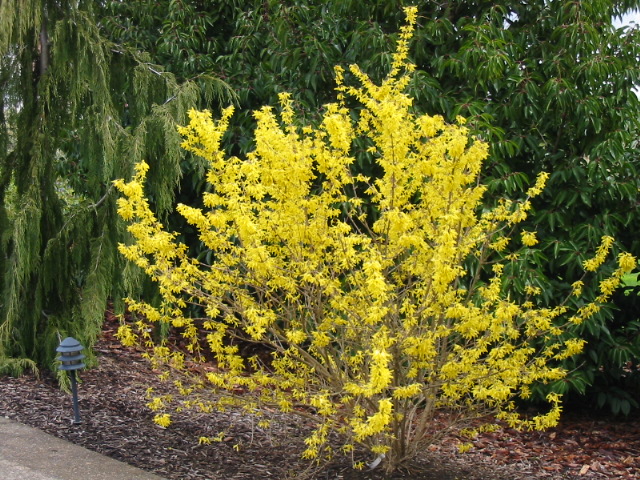| Botanical Name: Forsythia x intermedia 'Spring Glory' | |
| Common Name: Spring Glory Forsythia |

-
Anatomy
-
Culture
-
Design
Plant Type
Shrub
Height Range
6-12'
Flower Color
Yellow
Flower Season
Spring
Leaf Color
Green
Bark Color
Brown, Grey
Fruit Color
n/a
Fruit Season
n/a
Sun
Full
Water
Low, Medium
Growth Rate
Moderate
Soil Type
Clay, Loam
Soil Condition
Average, Poor, Well-drained
Soil pH
Neutral
Adverse Factors
n/a
Design Styles
English Cottage, Formal, Meadow, Ranch
Accenting Features
Fragrance, Showy Flowers
Seasonal Interest
Spring
Location Uses
Background, Shrub Border, Foundation, Walls / Fences
Special Uses
Cut Flowers, Hedge, Screen, Small Spaces
Attracts Wildlife
n/a
Information by: Stephanie Duer
Photographer:
Photographer:
-
Description
-
Notes
This forsythia grows about 8 feet tall and 6 feet wide, with a slightly more upright habit than the species, making it well suited to smaller spaces. Same brilliant masses of yellow spring flowers, as with the species.
Shearing really does ruin the graceful lines of Forsythia. To control size or re-invigorate for new growth, prune hard immediately after flowering or selectively prune any time during the summer; see tips for guidance. Requires well drained soil; heavy wet soils will cause it to decline and be diseased. Requires only moderate water once established. Forsythia, while quite showy in the spring, can be a bit drab in the summer, so plant it with later flowering shrubs such as lilacs and rose-of-sharon.